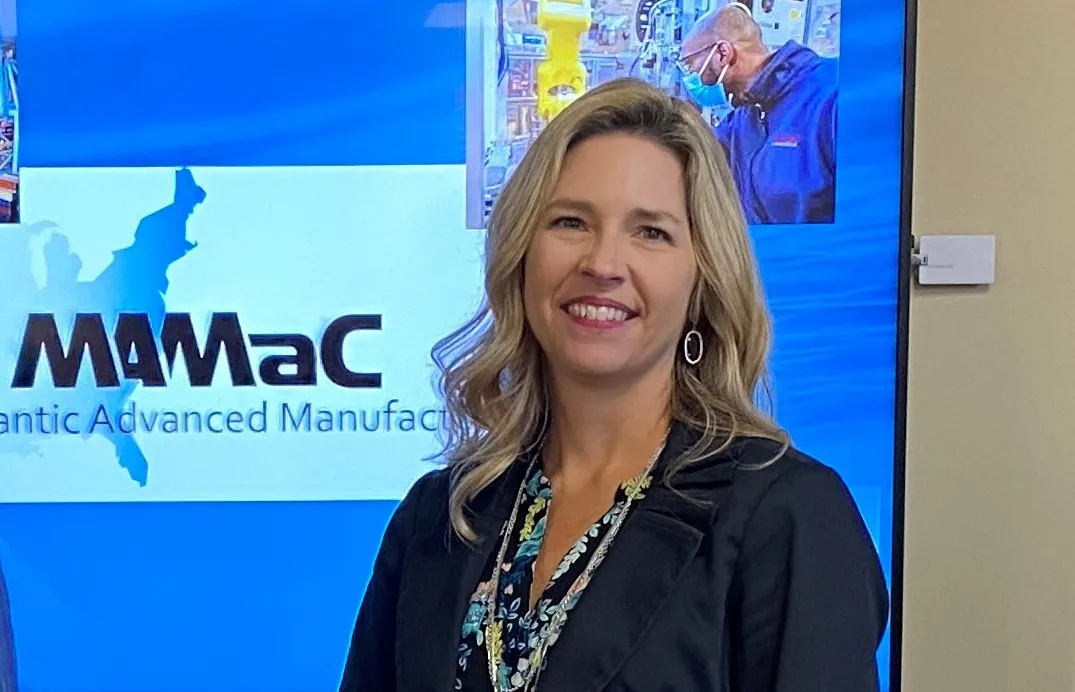
In building up to her current role as Greensville County’s inaugural economic development director, Natalie Slate invested considerable effort and expertise as she advanced through various roles. She returned after college to her hometown-adjacent county to work in planning, special projects and grant writing.
Her time in special projects, in particular, opened her eyes to the full scope of government operations, not to mention the nitty-gritty details that occur behind the scenes. “I was in charge of animal control. I also am a certified landfill operator, Class 2,” she said, breaking into a proud smile.
But nothing gets Slate more excited than talking about Greensville County’s future and economic vitality. Her clear vision includes equal commitments to creating opportunity, attracting investment, and strengthening the community’s economic foundation.
At the center of Slate’s current work is the Mid-Atlantic Advanced Manufacturing Center, better known locally as MAMaC. The 1,600-acre mega-site has been in the making for more than a decade. Originally envisioned for a single original equipment manufacturer (OEM), the plan for the park has evolved to accommodate multiple tenants.
“We’ve worked on this for 13 years now,” Slate said, of the effort that went into purchasing, engineering, connecting utilities and preparing the site for its debut on the economic development stage. Without a significant tax base, the county relied heavily on grant funds and collaborations to develop the site, recognizing the potential return that would come when fully occupied.
Ready for global competition, the site offers high-speed broadband, natural gas, robust electric power, and – perhaps most importantly – exceptional transportation access. Located at the crossroads of I-95 and U.S. 58, MAMaC is within a day’s drive of two-thirds of the U.S. population. “You can compete globally with a more rural, competitive operational cost,” said Slate, noting that active discussions are continuing with potential prospects.
A $1.3 billion natural-gas plant opened by Dominion Energy in 2018 on the Greensville-Brunswick border demonstrates that this area can deliver what potential new industrial partners want. “We’ve got the experience,” she said. “We know that we can bring in these big projects, and we can get the utilities and everything to them – on time, on or under budget – and help them be successful.”
Slate also is eager to tap into opportunities generated by Greensville’s new partnership with Virginia’s Gateway Region, which it joined this summer. “I’m very excited about being a part of this group and how much further it will help Greensville County grow and expand,” said Slate, who values how this current partnership allows her to leverage the marketing concentration she added to her business degree.
A Workforce That’s Ready to Go
Although recent local plant closures have created challenges, they have also revealed a hidden strength: the workforce is willing to commute and adapt. Citing a recent analysis, “people were coming from 45 to 50 miles away for medium-to lower-wage jobs,” Slate said. “That tells us we have a work-ready labor force and a wide recruitment reach.”
Greensville also benefits from proximity to three metro areas – Richmond, Hampton Roads and Rocky Mount, N.C. – and a generous portion of its workforce crosses its southern border with North Carolina.
Slate points to the Southside Virginia Education Center as a turning point for workforce readiness. Opened to boost educational attainment levels, the center offers programs from Southside Virginia Community College, adult education and dual-enrollment high school courses.
Facilities include welding, precision machining, health sciences and mechatronics labs – available for both ongoing coursework and rapid, customized training for new employers. “When Dominion Energy was building its $1.3 billion natural gas plant here, we launched a fast-track welding program to meet their needs,” Slate says. “It’s all about being ready for opportunity.”
That plant, which opened along the Greensville-Brunswick county border, today powers more than 400,000 homes. Its technology is expected to save customers about $2.1 billion during its nearly 40-year lifespan.
Positioning for Growth and Partnerships
Looking ahead, Slate sees promise in sectors ranging from traditional manufacturing to emerging technologies. “We’re very excited about data centers, energy projects like waste-to-energy, and new takes on farming such as controlled environment agriculture,” she said.
Recent wins include Carolina Structural Systems, which is building a truss manufacturing facility in the Greensville County Industrial Park, creating about 55 jobs, and the return of Boar’s Head Provisions, reopening with new equipment and plans to rehire about 70 workers initially.
For Slate, regional collaboration is a proven strategy, not a talking point. After all, clients don’t stop at jurisdictional lines. “People will drive for jobs, and businesses will benefit from new industries next door; that includes people stopping in to eat or get gas or stay overnight,” she said.
She points to the county’s joint Regional Industrial Facilities Authority with adjacent Emporia and Mecklenburg County as a model. “A win for one is a win for all,” she said. “We’ve seen firsthand how successes in neighboring counties spill over into our own economy.”
That’s part of why joining VGR was a natural step. “I’m a one-person shop, so having VGR’s staff – people I trust – to represent us at trade shows and industry events is invaluable,” she said. “They’ve already made us feel like part of the family.”